Two years after the Art and Culture Biennale and a month before the new edition, Trot Op! travelled to Mons again to visit the latest exhibitions and to tick off a couple of classics from the list. Good for another splendid weekend in one of Wallonia’s nicest cities. Go on and tag along.

My most loyal readers (hi mom!) will probably vividly remember that two years ago, I was invited to experience the Art and Culture Biennale of the French Community. This was a grand dance and music spectacle in Mons, with a love parade filling the streets and some girls in tights hopping up and down a kangaroo ball – my personal favourites: bless their little souls. I wrote this article on my experiences. It caused such an outburst of joy at the visitMons office, they spontaneously flew into a Dominique -nique -nique fuelled singalong bonanza – this is how I imagine parties in Wallonia – and soon invited me again to come and write another masterpiece. Because I don’t like looking horses in the mouth, let alone gift ones, I enthusiastically accepted the invitation and started planning. A few weeks later I was already blinking my eyes on the Mons main square again – the largest in Belgium after Sint-Truiden by the way. The Biennale is coming back this year, but not until mid-September. This of course doesn’t mean there’s nothing to see and do in Mons at the moment – on the contrary. Since the city was chosen as European Capital of Culture in 2015, it really made an effort to boost the annual cultural offer. This summer proved to be no different.
Mons for beginners: 6 tips for a weekend in Wallonia
Beaux Art Mons is the city’s main art museum, but is currently closed for renovation. That’s a pity, but to compensate they attracted a few large exhibitions that were scattered all over the centre. This allows you to see half of the city and the exhibited works of art in one go. And because these exhibitions are located in and around some of Mons’s most prominent buildings – buildings I had to ignore last time because of the programme – I thought it would be useful to include them this time around. Not all art on the streets of Mons is temporary by the way. My guide Didier – a Flemish guy who’s been living here for years – enthusiastically led me to all the new murals that were added since my last visit. There turned out to be a lot of them, and the offer was already impressive two years ago. They’re not sitting on their hands in Mons it seems. Now let’s get on with it and take a look at the first highlight.
1. ‘Something Sacred’ by Jaume Plensa: enchanting statues in the city centre

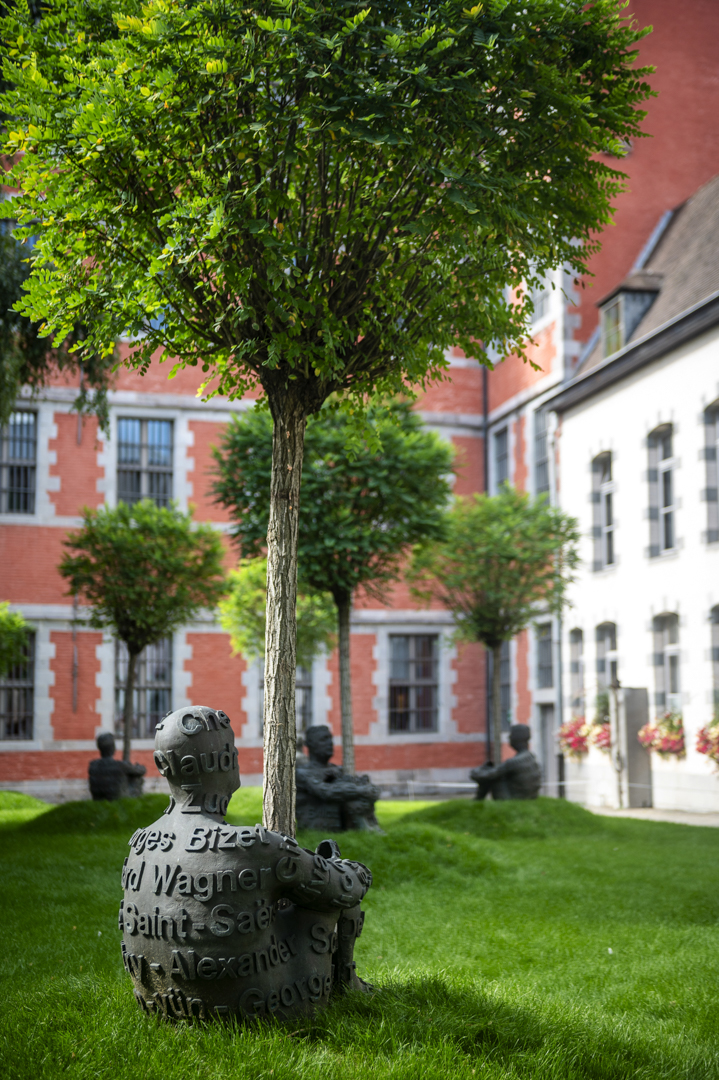

The reason I was blinking my eyes on the main square is because there were suddenly three huge cast iron heads facing the city hall. Call me a liar, but I don’t think these were there last time. They look like idealised female faces, radiating peace and reflection. Until you walk around them that is, and the contours and perspectives are bent to such an extent your brain will have trouble finding the right lines. Interesting experience. The sculptures were made by popular Catalan artist Jaume Plensa, and can be admired in various locations in Mons. Here on the square, but also in the beautiful Mayor’s Garden behind the city hall. In Saint George’s Hall next door – a deconsecrated chapel – all works that could not be put outside are exhibited. This is the only part of the exposition you have to pay for. Some of the most beautiful statues can be found in the Church of Saint Waltrude: three faces seemingly in the process of being born from a block of alabaster. High up towards the ceiling the two largest works of art can be seen. Almost ethereal figures in steel wire, looking at each other with a finger on their lips. The statues of Plensa can be visited until 8 October and are worth the trip to Mons by themselves. www.visitmons.co.uk/agenda/jaume-plensa-something-sacred
2. Saint Waltrude’s Collegiate Church: a church with a story but no spire
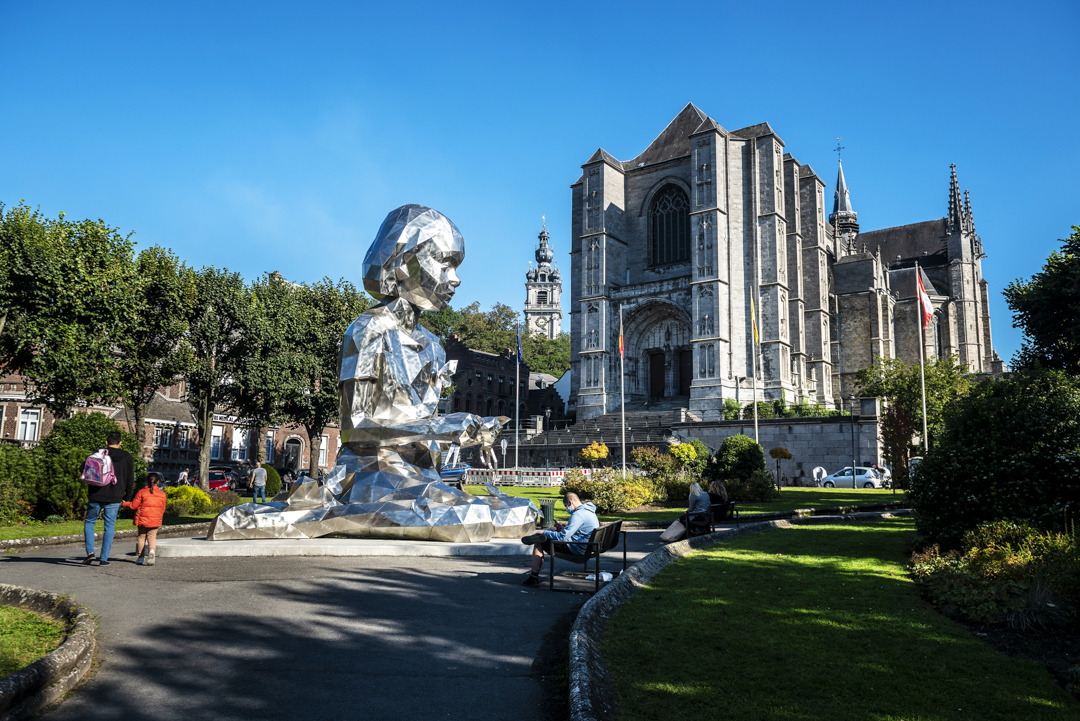


Saint Waltrude’s Church is of course an attraction in itself. This absolutely gigantic building should normally have been even more overwhelming. At the time, they wanted to put the highest church tower in Belgium on top of it: a spire with an absurd height of 190 meters. Because they’d been working on the church for 200 years, the money was gradually running out and the whole thing would probably topple over during the first real storm it would face, they decided to go for an alternative solution: build no tower at all, quickly throw a roof on top and be done with it all. Also cool I guess. Nevertheless, the church remains an impressive structure. There are a number of beautiful works by Jacques Dubroeucq to admire inside. This name will not ring a bell for most people (a large part of his oeuvre was lost) but he was the father of the Renaissance movement in the Low Countries. Saint Waltrude herself is the patron saint of the city of Mons. Originally she was a noblewoman from the 7th century, who apparently suffered a midlife crisis and therefor decided to have a monastery built on a hill. That monastery later grew to become the city of Mons. As the local saint, she has the honour of having her bones hang above the altar in a golden coffin. Her skull lies – don’t ask me why she was cut in half – in another little box in a side aisle. The weekend after Pentecost, those two boxes are loaded onto the golden carriage also parked in the church, to be driven around the city. This is a nice way for old Waltrude to get away from it all for a moment, and for Mons to surrender to Le Doudou: by far the biggest event of the year.
3. La Musée du Doudou: an essential stop to understand Mons
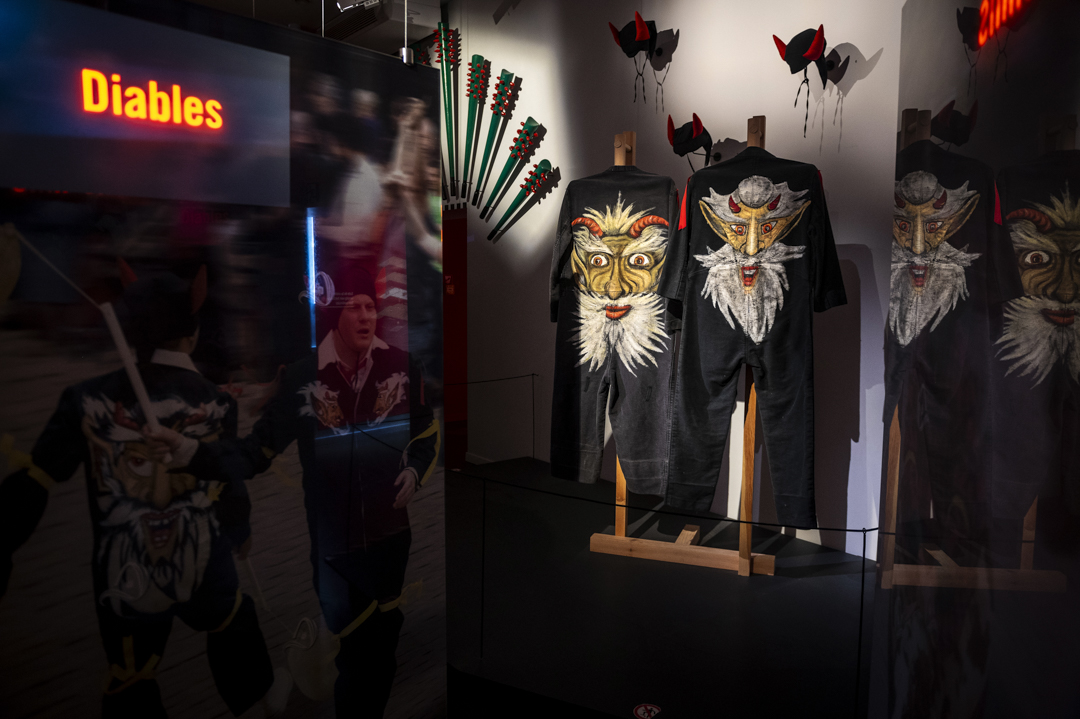
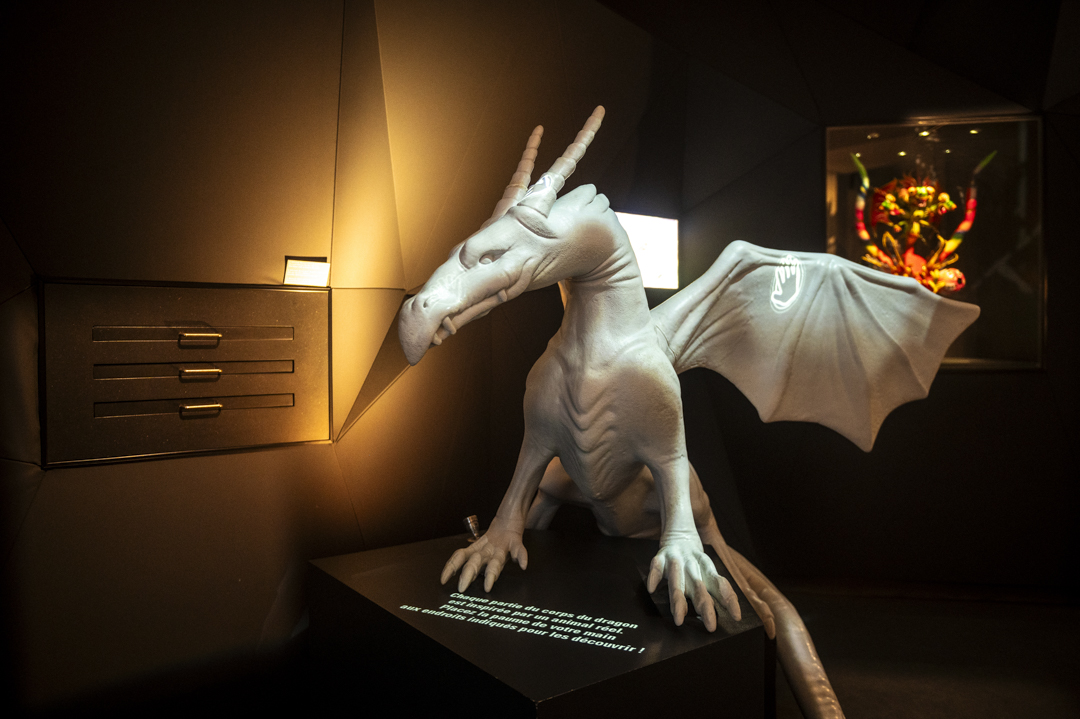

Le Doudou is a passionate folklore festival almost the entire city indulges in. Hundreds of extras are part of the parade, dressed in all kinds of costumes that are sometimes passed down from generation to generation. The event takes place in several phases. After all the pieces of Waltrude are loaded onto the carriage, it is met outside by a swirling sea of people, all looking to help push it up the slope. Because if this doesn’t happen in one go, the city will be in for a year of misery. If they don’t succeed two years in a row – fortunately this never occurred yet – the entire population has to swap with Charleroi and go live there for a year (the horror). Once the carriage is up the slope, Waltrude is quickly but ceremoniously pushed back into the church – these things shouldn’t take too long you know – and the crowd heads to the grand place where Saint George will fight a dragon for some reason. Not a real dragon of course, but a painted wooden beast with a horsehair tail. Whoever pulls a few hairs out of it will – in stark contrast to the city of Charleroi – enjoy a prosperous year. To say this creates some pretty wild scenes is quite the understatement. Those who’ve never been to the party itself, or are wondering about the how and why of the whole thing, should visit the Musée du Doudou. There you’ll get to see images of the event as if you were standing right on the square, and all the city legends are explained in detail. Equally interesting is that you can also delve into dragons, monsters and heroic sagas from all corners and cultures of the world. From the minotaur and the hyena-man to Samson and Batman: you’ll find them all. Surprisingly interesting museum. www.visitmons.co.uk/museums/doudou-museum-537181
4. ‘Beauty will Save the World’: great pictures in the Belfry garden


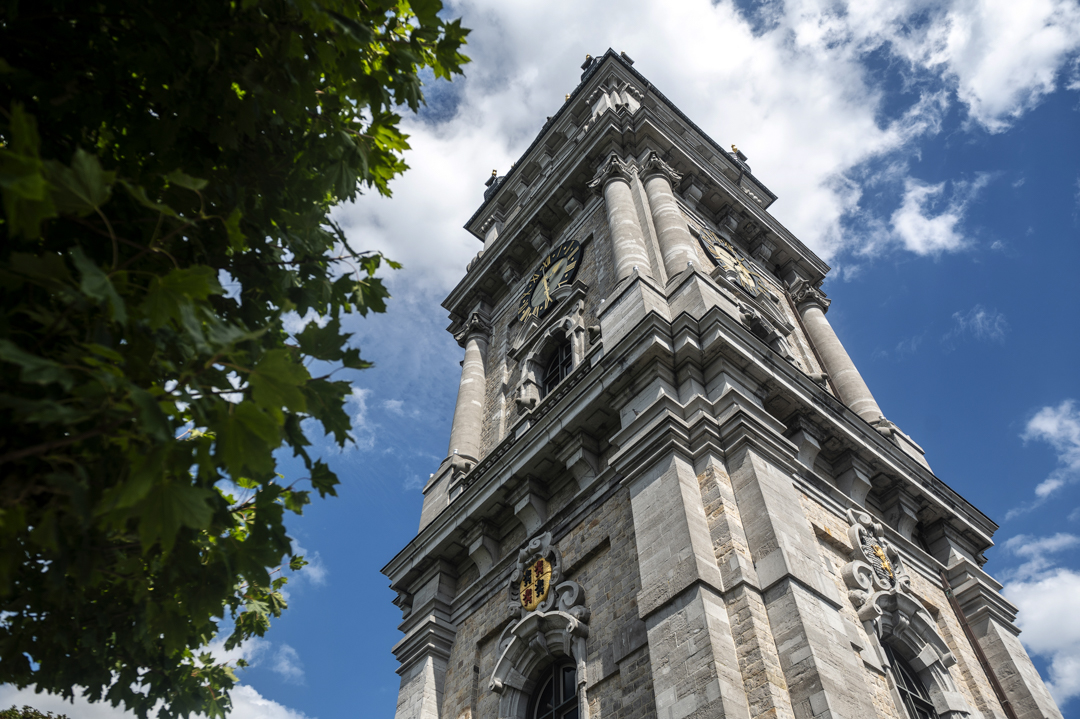
The second exhibition of this summer can be visited in the beautiful garden around the Belfry, and is a photo exhibition by French journalist/photographer Thierry Suzan. Cosy little garden by the way, and one of the best places in Mons to take a breather. Suzan is best known for his work for National Geographic, and his photos are what you’d expect. Sixty beautiful images of man, nature and culture can be viewed here, and they are pretty sensational. You can also enter the Belfry itself. It’s 87 meters high, and because of its location on a hill it’s the only building in Mons you can see from far outside the city. Belgium has no less than 57 belfries – all of which are UNESCO World Heritage sites – but this is the only baroque one. It was completely refurbished a while ago, so that you can now enter the tower in a modern glass elevator to see the bells and the mechanism behind them. The view is of course also worth the climb. Most of the hills in the distance are slag heaps from the mines by the way, and therefore artificial. www.visitmons.co.uk/agenda/beauty-will-save-the-world
5. Maison Losseau: a well-hidden Art Nouveau gem

A few hundred meters from the grand place you’ll find Maison Losseau. This is a historic building with a nice but somewhat unremarkable neoclassical façade. Inside is a library, a knowledge centre about Hainaut literature and some halls for smaller exhibitions, but the real treasure are the rooms of the original owner. This was a lawyer called Léon Losseau, who secretly commissioned one of the most beautifully preserved Art Nouveau interiors in the country. The fantastic stained glass windows in the ceiling of the central room are worth a visit by themselves, and the rest of the house only ups the ante. When it was built around 1900, it was the first home with central heating and electric lighting in Mons. It was also one of the first buildings with an elevator in the entire country. A lot can change in a hundred years. You can walk through all rooms on the ground floor, as well as the garden, as long as you slide a pair of freely provided slippers over your shoes before stepping on the wooden floors. They’re a bit too old for you to be putting stripes on them with your Nikes. www.maisonlosseau.be
6. Triobalade: ride through Mons on a tuktuk
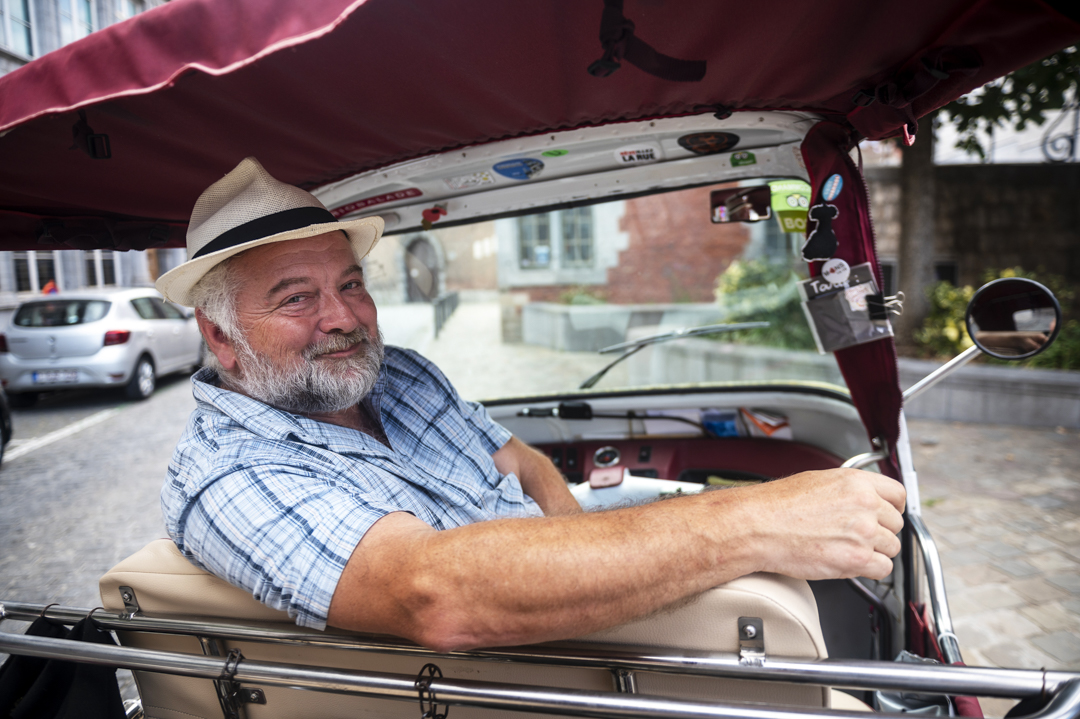
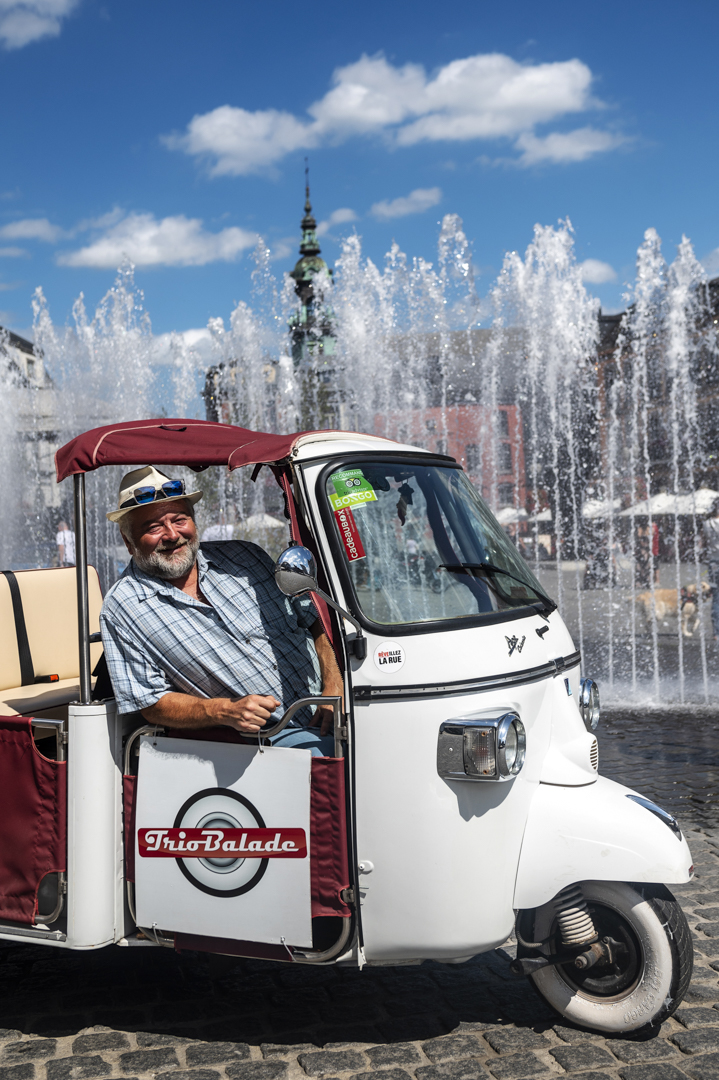

Mons is a pleasant city to walk through, but the streets can meander up and down quite heavily. After a day and a half of strolling around, my feet had had enough. But why walk when you can let yourself be driven around? This is why I booked Ludo and his Triobalade: a real tuktuk shipped straight from Asia. Because I had seen the city centre by now, we took a ride to the outskirts. Driving a rattling little tuktuk on a motorway with a 90km/h speed limit is not the most relaxing experience, but it sure is an adventure. We first drove to the Grand-Large (that would be “Big-Wide” in English, which I find quite silly): an 80 hectares body of water where two canals merge, used by the locals as a leisure spot. The marina is located here and you can have a picnic or try a variety of water sports. The second stop was the Vincent van Gogh House, which is a few minutes’ drive from the city centre. At first sight this is an inconspicuous little house, but it’s where Van Gogh actually learned how to paint. Nice stop, and seated in the Triobalade, they’ll surely see you coming. www.mons.2016.com
Hotels in Mons and further information

Just like last time, my stay in Mons was in Martin’s Dream Hotel. This is a contemporary place where many rooms got their own themed decoration. Two years ago I slept in the Magritte room – which had floating bowler hats as a chandelier. This year I got the the slightly less wild Doudou room. It did have an old church window to look through though.
For more information about Mons, visit www.visitmons.be.
For all information about Wallonia as a destination, surf to www.walloniebelgietoerisme.be.
Fancy some other Walloon outings? Read here my posts on Namur, Waterloo, Tournai, Charleroi, Liège, Spa, Virionval and Gaume.














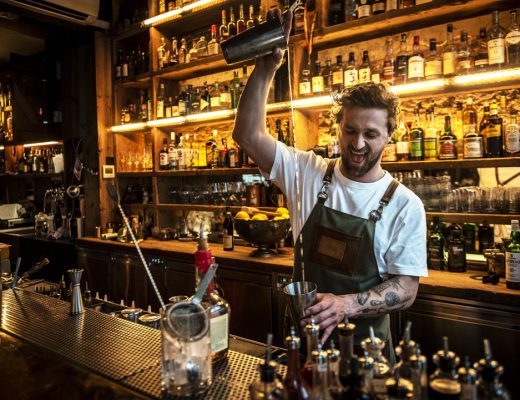



No Comments